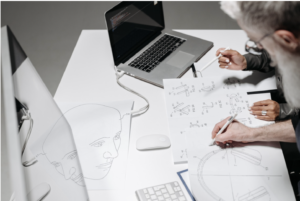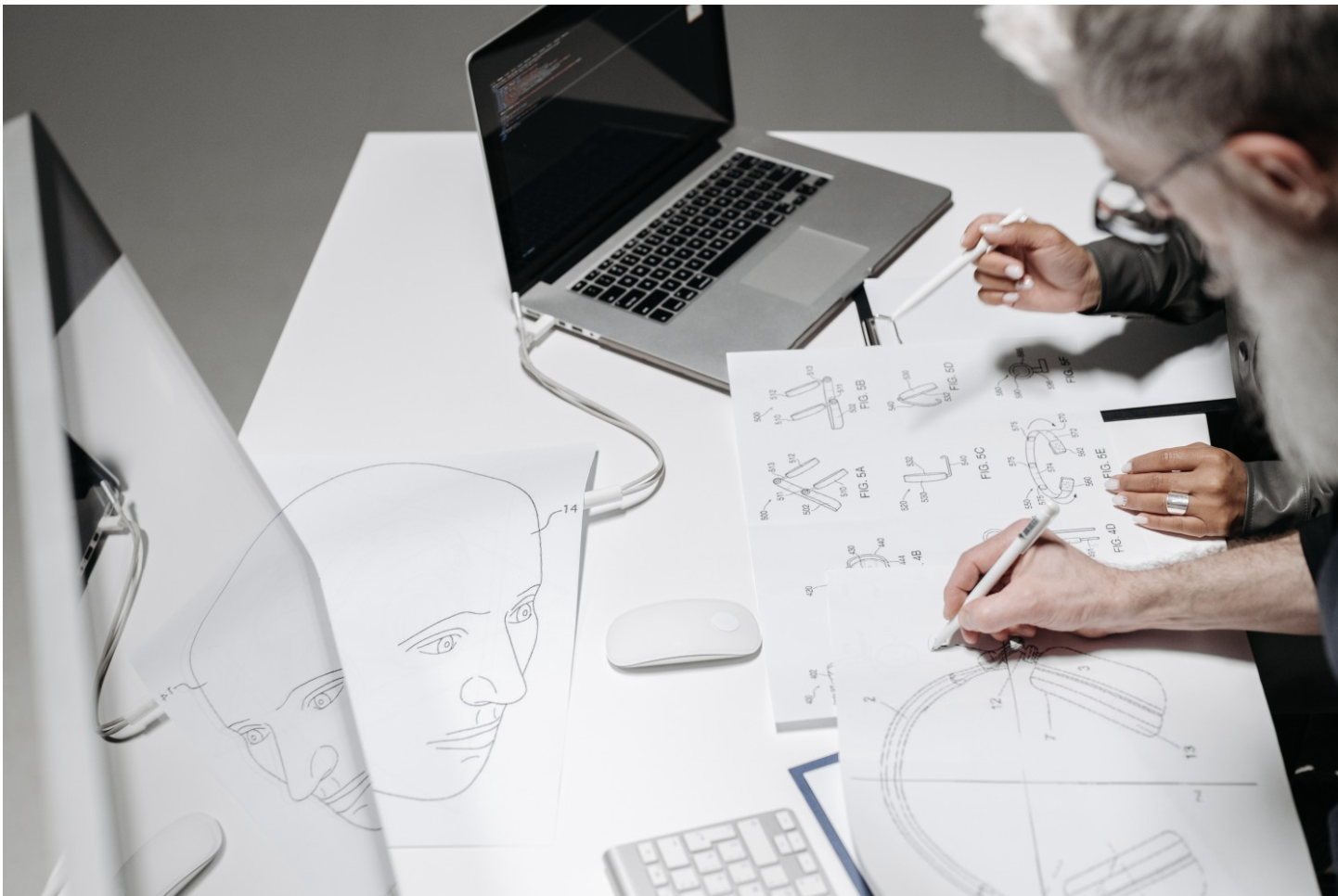Working with Shapes and Icons: Graphic Designs Services
In graphic design, shapes, and icons are essential elements that provide appeal and improve the composition of a piece of work. E1W Media’s graphics team understands how to use shapes and icons efficiently is crucial when producing any visual project, be it a logo, website, or other. We’ll examine the basics of working with shapes and icons in graphic design in this tutorial for beginners. Working with a graphic designer or Graphic design services for shapes and icons requires communicating your project’s requirements in simple terms.

Shapes
The basic elements of design are shapes. They can convey a variety of thoughts and feelings and can be simple or complex, geometric or organic. When working with forms, keep these points in mind:
1. Purpose: Identify the function of each shape in your design. Is it simply decorative or does it have some other purpose? You can choose and place shapes more efficiently if you have a clear understanding of their intended use.
2. Balance and Proportion: In a design, shapes can bring balance and harmony to the eye. To achieve the correct balance and proportion, experiment with various sizes, placements, and arrangements. Balance and proportion are important factors to think about when using digital design for graphic design. To make a composition visually appealing, it’s important to achieve a harmonious balance between different design elements.
3. Contrast: To add interest and highlight certain components of your design, use contrasting shapes. To create a composition that is dynamic and compelling, experiment with different shapes.
4. Negative Space: Pay close attention to the negative space, commonly referred to as the space around and between shapes. To generate a sense of balance and clarity, negative space might be just as important as the shapes themselves.
Icons
Objects, concepts, or actions are visually represented simply by icons. They are frequently utilized in branding, signage, and user interfaces. Here are some pointers for using icons:
1. Simplicity: Keep icons straightforward and recognized. They provide a speedy and effective means of information transmission. Keep your descriptions simple so the visitor isn’t distracted or confused.
2. Consistency: Keep your icon set’s design and visual language constant. This will help with the development of a consistent and cohesive design.
3. Symbolism: Icons should be simple to understand and connect to their intended meaning. Make easy-to-understand icons or use symbols that are well-recognized.
4. Scalability: Create vector-based icons to ensure scalability without affecting quality. This prevents pixelation or distortion when used in different sizes.
5. Context: Take into account the setting in which the icons will be used. They should modify their look and behaviours to fit the target market and the overall design.
Tools and Techniques
Graphic design services frequently use a variety of tools and techniques while producing and modifying shapes and icons. These may include design programs like Sketch or Figma or vector editing programs like Adobe Illustrator. For creating and editing shapes and icons, these tools offer many features, including resizing, rotating, and applying effects. To achieve the desired visual impact in their designs, designers might also use libraries of ready-made icons or specially generated forms. Working with shapes and icons in graphic design are a specialty of many graphic design websites and companies One of them is E1W Media – premium provider of many graphics designing services.
The use of icons and forms is essential in graphic design. It can successfully communicate ideas, improve visual appeal, and transmit messages. It’s crucial to take their meaning, simplicity, and compatibility with the overall design into account while using icons and forms. They should enhance the typeface and produce a pleasing composition. Powerful graphic design tools include icons and shapes. They can produce a unified design, transmit messages, and offer visual appeal. It’s important to take into account their size, proportion, and alignment with other elements while using them. A logical and visually appealing composition can also be made by using consistent styles and colours.

